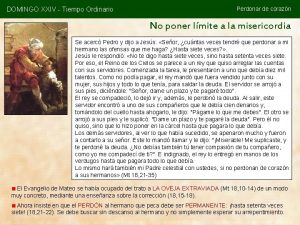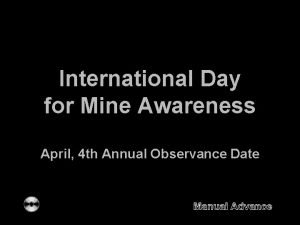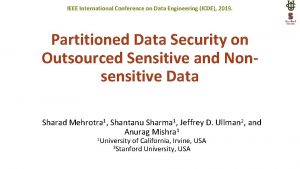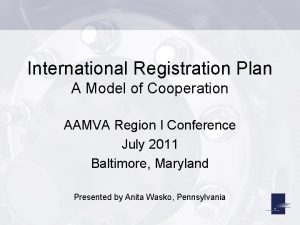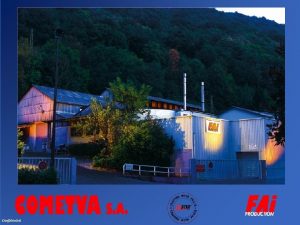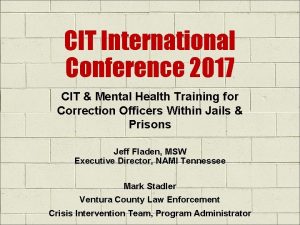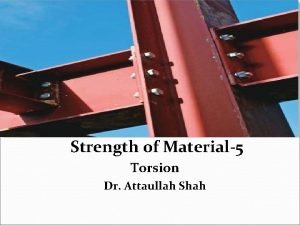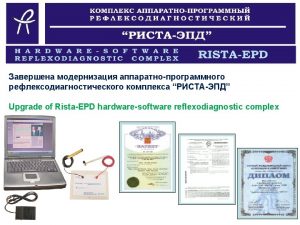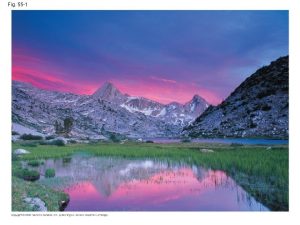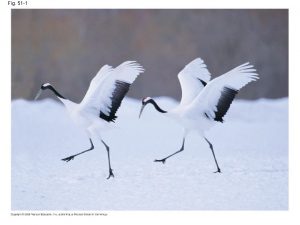XXIV FIG INTERNATIONAL CONFERENCE SYDNEY AUSTRALIA APRIL 11





















- Slides: 21

XXIV FIG INTERNATIONAL CONFERENCE, SYDNEY, AUSTRALIA , APRIL 11 – 16, 2010 THEME: FACING THE CHALLENGE – BUILDING THE CAPACITY

TOOLS FOR LAND GOVERNANCE IN NIGERIA PRESENTED BY Andrus Nnaemeka Ukaejiofo, FNIVS

ANDRUS NNAEMEKA UKAEJIOFO, FNIVS, FCAI, RSV , COORDINATOR Federal Land Information System (FELIS) & National Technical Development Forum On Land Administration (NTDF) FELLOW, Nigerian Institution Of Estate Surveyors And Valuers, FELLOW, Chartered Institute of Administrators (FCAI) MEMBER, Research and Development Team, NIESV Learning Centre Nigerian Institution of Estate Surveyors and Valuers MEMBER, Geographic Information Society of Nigeria (GEOSON) MEMBER, Computer Society of Nigeria (NCS) DEPARTMENT OF LANDS AND HOUSING Federal Ministry of Lands, Housing and Urban Development u_andrus@yahoo. com, andrusukaejiofo@yahoo. com

OUTLINE 1. INTRODUCTION 2. OVERVIEW OF LAND GOVERNANCE 3. LAND GOVERNANCE IN NIGERIA ü ü ü COUNTRY STATISTICS BANE OF LAND ADMINISTRATION IN NIGERIA BASIS FOR REFORM 4. HISTORY OF LAND ADMINISTRATION IN NIGERIA ü ü TRADITIONAL SYSTEM COLONIAL ERA 5. THE LAND REFORM PROJECT ü THE LAND USE ACT 6. THE SEARCH FOR SUSTANABLE APPROACH 7. ü ü ü RECENT REFORM PROGRAMMES NTDF FELIS LAW REVIEW AND COLLABORATION 8. THE LAND REFORM COMMITTEE ü ü ü NATIONAL LAND INVENTORY INSTITUTIONAL RE-ORIENTATION DEVELOPMENT OF NATINAL CADASTRE 9. CONCLUSION

INTRODUCTION LAND: üIt is a source of livelihood, employment and wealth; üIt is the foundation for shelter in urban areas and a base for agricultural production in the rural areas; üLand has historical, cultural, social, economic and spiritual significance in Nigeria üIt is indestructible, inexhaustible yet inelastic üIt is also a major source of communal and individual conflict

INTRODUCTION – II üThere is one National Land Law but individual State governments make orders for effective implementation of the law for the use of land within their jurisdiction and under their control ü Uniform and centrally coordinated approach to land administration across the country is being pursued; üCustomary and statutory land administration practices vary between States üEffort is however being made to entrench harmonised and sustainable property rights regime within the country

OVERVIEW OF LAND GOVERNANCE üLand governance is concerned with access to land, its use and satisfaction of competing interests; üIts aim is essentially political and social stability, transparency in the processes and procedures as well as time-sensitive actions; ü Its effectiveness depends on the priorities of government because there are components of technical, social, political and human rights issues involved in land governance;

LAND GOVERNANCE IN NIGERIA Aims at providing a reliable basis for: § Recording ownership or “holdership”, § Determining value and use of land, § Making access to land records easier; § Introducing transparency administration processes; in the land § Addressing time cost of acquiring the land including titling; § Providing guiding rules and institutional structure for administration;

LAND GOVERNANCE IN NIGERIA I i. COUNTRY STATISTICS § § § 36 States and the Federal Capital Territory, Abuja Land area is approx. 923, 768 sq km Population is approximately 140 m by 2006 census Population accounts for 47% of that of West Africa Growth rate is 2. 4% per annum Rich in petroleum reserve – about 95% of foreign exchange earnings 70% - 80% of land lie in rural areas with intensive agricultural practices §

LAND GOVERNANCE IN NIGERIA II ii BANE OF LAND ADMINISTRATION § Increasing urban population with slow infrastructural development § Increasing number of unplanned settlements § Absence of inventory of occupancy statistics of informal settlements § Near absence of formal documentation of land transactions § Low land titling infrastructure. About 3% of land in the country is mapped for cadastral purposes and titled § There are increasing transactions in land on commercial basis, demanding marketable title to every piece of land

LAND GOVERNANCE IN NIGERIA III iii BASIS FOR LAND REFORM § Right to land has become an obvious factor for sustainable livelihood; § Assured property right is also a cornerstone for national, social and economic stability; § Land market also contributes to the country’s GDP; § There is a growing need for the development of appropriate land rights infrastructure; § Citizens can no longer cope with poverty in the midst of plenty;

HISTORY OF LAND ADMINISTRATION IN NIGERIA i TRADITIONAL LAND SYSTEM § Land was owned by individuals, families or communities; § Authority to manage was vested in the family head, chief or emir; § In the northern part of the country land belonging to the community was inalienable under the Customary law; § The right to inherit land was the major form of social security although women were excluded in some customs; § However where Islamic law operates women have opportunity to inherit land;

HISTORY OF LAND ADMINISTRATION IN NIGERIA II LAND ADMINISTRATION UNDER THE COLONIAL GOVERNMENT § Land registration was introduced in Nigeria in 1863; § Land Native Rights Proclamation Law was introduced in the Southern and Northern Protectorates in 1900 and 1901 respectively and paved the way for the introduction of the British Land Tenure System; § The Crown Lands Act (later known as State Lands Act) formalised land administration in the Southern parts of Nigeria (but it did not cover freehold lands) § Land in the Northern part was nationalised by the Land Native Rights Act of 1910 which vested the management of all native lands and all rights in land in the Government

HISTORY OF LAND ADMINISTRATION IN NIGERIA III LAND ADMINISTRATION UNDER THE COLONIAL GOVERNMENT § Land Native Rights Proclamation Law for then Northern Region was reaffirmed in 1914 § Repealed and re-enacted as Land Native Rights Ordinance in 1961 and replaced as land Tenure Law of 1962 § It applied to all lands in the Northern Region, referred to as “Native Lands” § Freehold land was permissible in the Southern Region while only leasehold was permissible in the Northern Region § Traditional Land Right system was essentially extinguished in the North in preference to statutory leasehold; § A single Land Registration Law – Title Registration Act – however applied across the country;

THE LAND REFORM PROJECT LAND USE ACT Cap L. 5 2004 (DECREE 6, 1978) § Introduced in 1978 to harmonise and unify land tenure systems in the country; § Intended to improve access to land for every citizen in any States; § Intended to ensure easier access to land for Government projects; § Reduce cost of compensation by the use of “Police Power” for land acquisition; § Eliminate gender inequality in land ownership § However its implementation has not been very successful because the provisions are not fully understood even by land administrators; § The focus of the reform has been the land laws while little attention was paid to the process of allocation, use and administration

THE SEARCH FOR SUSTAINABLE APPROACH The present government included Land Reform as part of its Agenda because it recognised that land is a major factor in its national development: § Land undoubtedly is key to the socio-economic development of any nation; § Land reform in Nigeria is required to strengthen the economic and productive potential of land by reviewing the laws as well as strengthening the institutional structure for its administration; § It also desires to ensure effective, secure and uniform land titling system; § While individual States initiated various programmes as part of the reforms process the Federal Government introduced programmes that sought to harmonise and unify the reform focus; § The programmes include the National Technical Development Forum on Land Administration (NTDF), effort to develop standards for the introduction of modern technology, law review and international collaboration among others;

RECENT REFORM PROGRAMMES NTDF o This programme introduced in 2006 serves as a peer-review and influence programme for advocacy, sensitization and adoption of best practices across the country; o All agencies of government at State and Federal levels are involved - represented by Directors of Lands, Deeds Registrars and State Surveyors-General; o It works to: ü agree on uniform operation in land administration, ü agree on consistent data recording format, ügenerate process descriptions that will facilitate the development of technical manuals for land administration activities, ü agree on software standards to ensure future interoperability, ü prevent unnecessary duplication of efforts where resources/facilities could be shared, ü promote cordial relationship among States and instill a sense of common purpose, o It has worked to adopt standard procedures that will harmonise land administration and registration processes; o. It is also working to ensure common standards for the application of modern technology in land administration;

RECENT REFORM PROGRAMMES II Federal Land Information System (FELIS) and other programmes : o FELIS is a Federal project for the computerisation of Federal Government Land records nationwide; o It was introduced in 2004 and commissioned in 2006; o Many States have since received encouragement to initiate their computerisation programmes; o By some coincidence some of the States namely Plateau, Kwara, Kaduna, Benue are adopting the FELIS approach; o. The ultimate benefit is that the similarity in the systems will make the establishment of the National Land Depository as the apex land records hub easier; o. On law review, recommendations have been made to the National Assembly essentially to review the consent clause, which is arguably perceived to be an impediment; o We have existing technical collaboration with Her Majesty’s Land Registry of United Kingdom for technical support which has been coming through DFID and Security, Justice and Growth Programme (SJG);

THE PRESIDENTIAL TECHNICAL COMMITTEE ON LAND REFORM o The Committee has a Presidential mandate to: ü Collaborate with States to provide technical assistance to produce land cadastral inventory for the country; üDetermine individual possessory rights using best practices; üTo ensure that land titles issued in the course of its work are duly registered; üAssist States and Local Governments to establish arbitration mechanism for land ownership and conflict resolution üEstablish and maintain a National Depository for land titles; üEstablish a mechanism for land valuation in both urban and rural areas o The Committee has set to work and is hoping to prepare a comprehensive inventory of land holdings in all parts of the country by preparing a cadastral map of Nigeria; o There are plans to engage and train technical assistants to help with the project; o It is also working on institutional re-orientation in all States of the Federation – sensitisation programmes are being planned; o It will start with pilot projects in select states;

CONCLUSION o Remarkable impact in land governance in Nigeria is yet to happen; o. NTDF has however been found very useful as an integrating factor and a peer review project; o. It has helped to establish standards; o. It has also been acclaimed to sensitise land administration operators to improve their traditional approach to land administration; o. States are now able to generate statistics of achievements within a specified time period; o The programme of modernisation and computerisation have introduced transparent approaches to land governance; o. The programme of the Land Reform Committee is expected to introduce a much improved approach to land governance.

THANK YOU FOR YOUR ATTENTION
 Kathy coover
Kathy coover What is the capital of australia sydney
What is the capital of australia sydney Mark de sydney australia y hans de berlin
Mark de sydney australia y hans de berlin Canto xxiv inferno
Canto xxiv inferno Xxiv domenica tempo ordinario anno b
Xxiv domenica tempo ordinario anno b Xxiv domingo del tiempo ordinario ciclo b
Xxiv domingo del tiempo ordinario ciclo b 23 april international children's day turkey
23 april international children's day turkey International day april 4
International day april 4 International cryogenic engineering conference
International cryogenic engineering conference International gambling conference
International gambling conference Aerotech conference
Aerotech conference Icde 2019
Icde 2019 Orange catholic bible
Orange catholic bible International space development conference
International space development conference International telemetry conference
International telemetry conference Where to find irp number on cab card
Where to find irp number on cab card Cometva
Cometva Cit healthcare conference 2017
Cit healthcare conference 2017 Asbo international
Asbo international Sig figs
Sig figs Torsion moment
Torsion moment How many significant figures in 10082
How many significant figures in 10082





